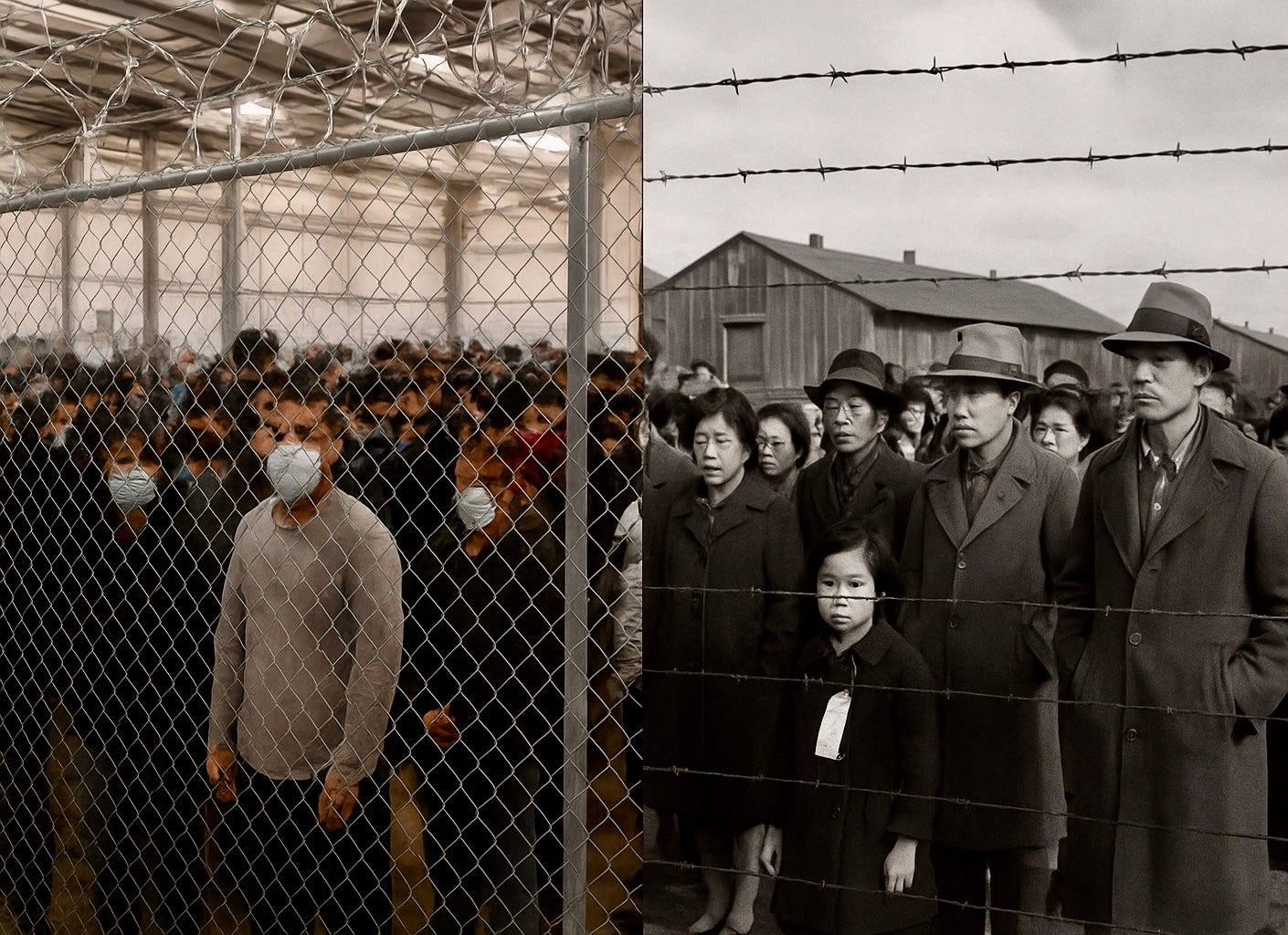Rebooting Fort Bliss
History’s echoes of misery at Fort Bliss remind us that we don't erase our mistakes—we recycle them.
Fort Bliss, Texas. Once upon a time, the U.S. government called it a camp for “alien enemies.” Barbed wire, watchtowers, the whole works. They brought Japanese immigrants and Japanese Americans here in the early 1940s. Men like Brian Niiya’s grandfather, who was arrested on the night of Pearl Harbor because he edited a Japanese-language newspaper. No trial. No crime. Just an enemy, by definition.
That was the start. From Fort Bliss, people were shipped to other camps across the country. Families lost homes, businesses, and farms. One hundred twenty-five thousand Japanese Americans, most of them citizens, were locked up. Not for what they had done, but for who they were.
Fast forward. Fort Bliss is again in the business of detention. This time, it’s ICE. Five thousand beds. White tent city in the desert. The nation’s largest immigrant detention center. Officials call it a “bridge” between arrest and removal. Same fences. Same logic. Different targets.
The Department of Homeland Security insists the comparison is offensive. “Deranged and lazy,” says one spokesperson. They say this is about the “worst of the worst.” Murderers, gang members, pedophiles. And yet, ICE’s own numbers tell another story: nearly half of the 59,000 people in custody have no criminal record. None. Their only offense is being here.
Across the land of the free and the home of the brave, ICE is arresting four times as many non-criminals as criminals, according to a Cato Institute analysis of government data.
That sounds familiar to Mike Ishii, whose family was locked away at Minidoka in Idaho. He says the echoes are obvious: “In 1941, it was frightening. Right now, it’s frightening again.”
President Trump has recycled the same legal tool Franklin D. Roosevelt used in 1941—the Alien Enemies Act of 1798. Back then, it was the Japanese, Germans, and Italians. Today, it’s whoever the president designates as a threat. For now, that’s immigrants. The categories shift, the law remains handy.
Defenders of the camp insist it’s not the same. But people who read history, who study it, recognize the pattern. They’ve heard the justifications before. They’ve seen the bloodless white paperwork that turns neighbors into suspects. They know how fear makes everything seem reasonable.
Fort Bliss is more than a name. It’s more than a misnomer. It’s a symbol. A reminder that America doesn’t always learn from its mistakes—it reboots them for modern audiences, adding improved special effects for maximum impact and bigger popcorn sales.
And that’s the test, isn’t it? Not whether we can spot history repeating, but whether we can stop it when it does. Because if we can’t—or won’t—then Fort Bliss is just the latest chapter in a very old story. One we’ll tell ourselves we never could have seen coming, even though the echoes were deafening all along.
So it goes.



